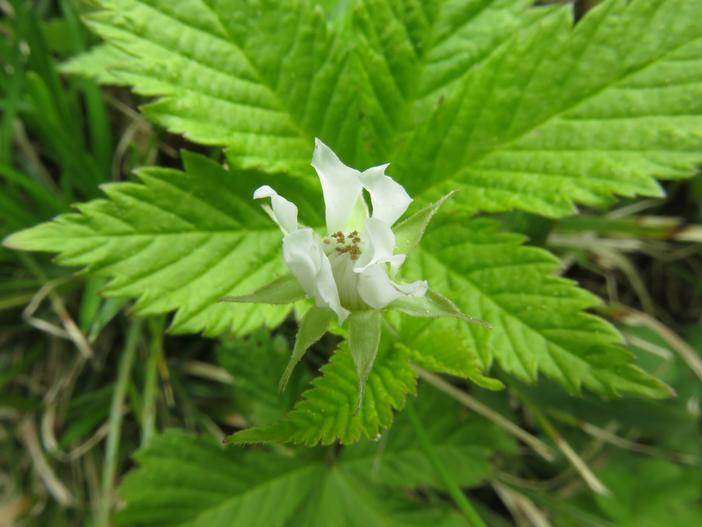Japanese Wineberry
(Rubus pseudojaponicus)
Japanese Wineberry (Rubus pseudojaponicus)
/
/

Qwert1234
CC BY-SA 4.0
Image By:
Qwert1234
Recorded By:
Copyright:
CC BY-SA 4.0
Copyright Notice:
Photo by: Qwert1234 | License Type: CC BY-SA 4.0 | License URL: https://creativecommons.org/licenses/by-sa/4.0 | Uploader: Qwert1234 | Publisher: Wikipedia Commons




Estimated Native Range
Summary
Rubus pseudojaponicus, commonly known as Japanese Wineberry, is a deciduous shrub native to forest edges, roadsides, and open woodlands in Eastern Asia, including Japan, Korea, and China. It exhibits a rapid growth rate, typically reaching a height of 3-9 feet (0.9-2.7 meters). This plant is characterized by its arching stems covered with fine bristles and prickles, and its palmate leaves with three to five leaflets. The white flowers, which bloom in the summer, are followed by edible red berries that are both attractive and tasty.
Japanese Wineberry is valued for its ornamental features, including the showy berries and the fine texture of its foliage. It is often used in gardens for naturalizing areas, as a fruiting hedge, or for its potential in permaculture designs. This shrub thrives in full sun to part shade and prefers medium draining loam or clay soils. It requires medium amounts of water and benefits from mulching to retain soil moisture. While generally low-maintenance, it can be susceptible to fungal diseases such as botrytis or rust. Gardeners should be aware that in some regions, it can become invasive and spread beyond its intended area, so control measures may be necessary.CC BY-SA 4.0
Japanese Wineberry is valued for its ornamental features, including the showy berries and the fine texture of its foliage. It is often used in gardens for naturalizing areas, as a fruiting hedge, or for its potential in permaculture designs. This shrub thrives in full sun to part shade and prefers medium draining loam or clay soils. It requires medium amounts of water and benefits from mulching to retain soil moisture. While generally low-maintenance, it can be susceptible to fungal diseases such as botrytis or rust. Gardeners should be aware that in some regions, it can become invasive and spread beyond its intended area, so control measures may be necessary.CC BY-SA 4.0
Plant Description
- Plant Type: Shrub
- Height: 3-9 feet
- Width: 4-6 feet
- Growth Rate: Rapid
- Flower Color: White
- Flowering Season: Summer
- Leaf Retention: Deciduous
Growth Requirements
- Sun: Full Sun, Part Shade
- Water: Medium
- Drainage: Medium
Common Uses
Edible*Disclaimer: Easyscape's listed plant edibility is for informational use. Always verify the safety and proper identification of any plant before consumption.
Natural Habitat
Forest edges, roadsides, and open woodlands in Eastern Asia
Other Names
Common Names:
Scientific Names: , Rubus pseudojaponicus, Rubus americanus var. diversifolius, Rubus americanus var. japonicus, Rubus caesius, Rubus japonicus, Rubus pseudojaponicus var. diversifolius, Rubus triflorus var. diversifolius, Rubus triflorus var. japonicus,
GBIF Accepted Name: